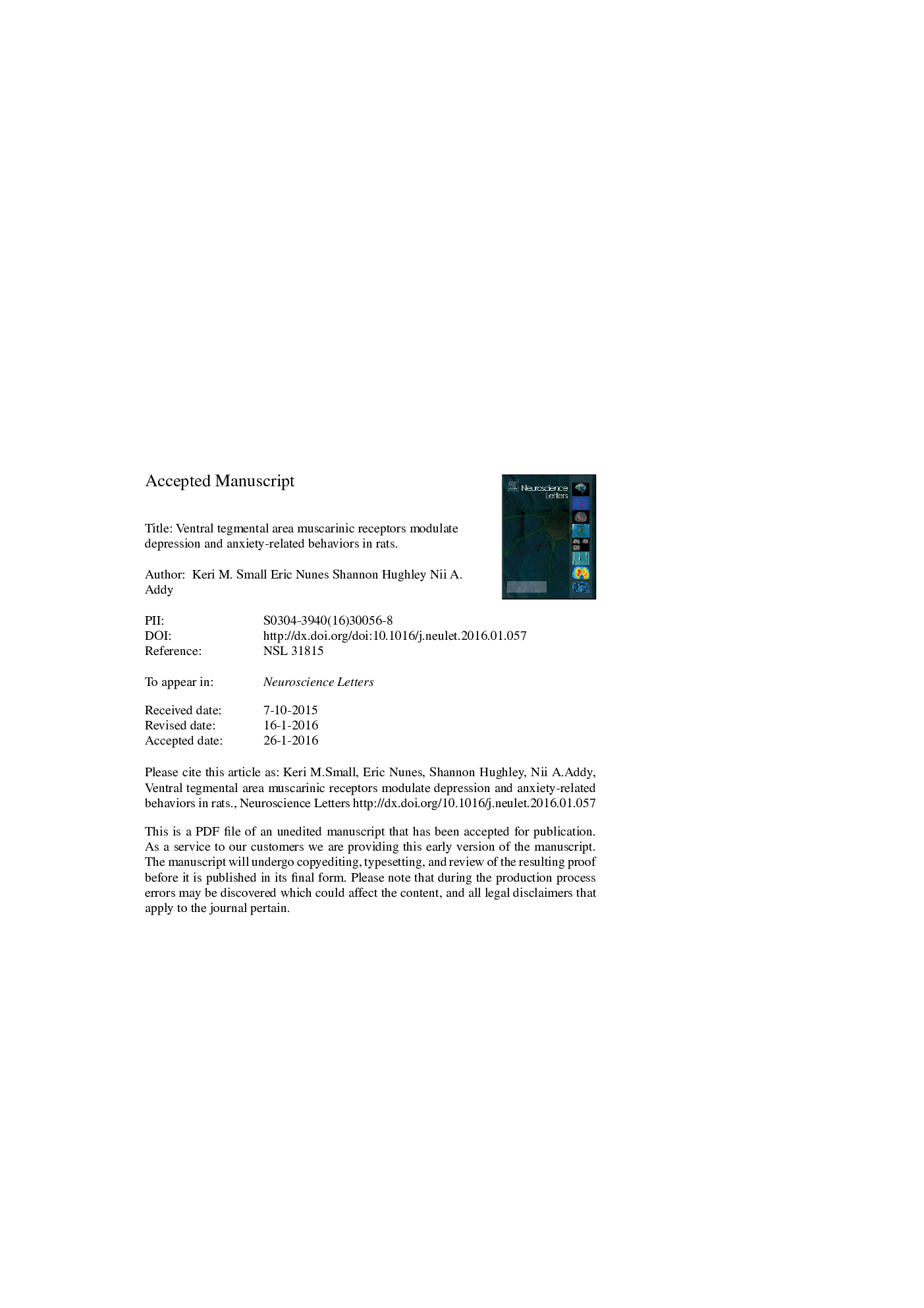| Article ID | Journal | Published Year | Pages | File Type |
|---|---|---|---|---|
| 6279794 | Neuroscience Letters | 2016 | 18 Pages |
Abstract
Cholinergic and dopaminergic mechanisms within the mesolimbic dopamine system are suggested to play a role in the manifestation of depression and anxiety-related disorders. However, despite the fact that cholinergic mechanisms in the ventral tegmental area (VTA) highly regulate dopamine activity, the role of VTA cholinergic mechanisms in depression-related behaviors is relatively unknown. Here we sought to determine whether enhancing cholinergic tone in the VTA would alter depression and anxiety-related behavior in the forced swim test (FST), elevated plus maze (EPM) and sucrose preference test (SPT). Adult Sprague Dawley male rats received VTA infusion of the acetylcholinesterase inhibitor, physostigmine (0, 1, 2 μg/side), immediately prior to the FST, EPM, or SPT. Physostigmine administration increased immobility time in the FST, decreased time spent on open arms in the EPM, and decreased sucrose preference. We also examined whether activation of VTA muscarinic receptors was sufficient to alter behavior in the FST and EPM. Similar to physostigmine, VTA infusion of the muscarinic receptor agonist, pilocarpine (0, 3, 30 μg/side), increased immobility time in the FST and decreased time spent on open arms in the EPM. These data suggest that enhanced VTA cholinergic tone promotes pro-depressive and anxiogenic-like effects and demonstrate that specific activation of VTA muscarinic receptors is also sufficient to induce pro-depressive and anxiogenic responses. Together, these findings reveal a novel role of VTA cholinergic, and specifically muscarinic receptor, mechanisms in mediating responses to stress and anxiety.
Keywords
Related Topics
Life Sciences
Neuroscience
Neuroscience (General)
Authors
Keri M. Small, Eric Nunes, Shannon Hughley, Nii A. Addy,
